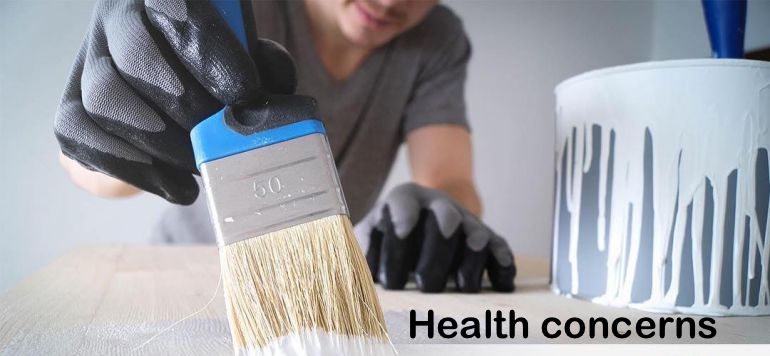Many people think they can use exterior paint on the inside of their home. Although you can technically do this, it’s not recommended. The reason being is because exterior paint contains certain additives that are meant for outdoor use only. As a result, using exterior paint indoors can lead to health concerns and nasty, lingering odors that can last for years and years.
So, before you go and paint your interior walls, it’s best to best to fully understand why you shouldn’t use exterior paint on the inside of your home and what kinds of paints would be more appropriate for your needs.
What’s the biggest differences between exterior and interior paints?
The main difference between exterior and interior paints is the kind of resin used to make them. For those individuals who are unfamiliar with what resin is, this additive binds the pigments to whatever surface you’re painting. For example, the additives companies use in exterior paints are designed to survive harsh temperatures, fading from sunlight, constant exposure to moisture, and both chipping and peeling due to your basis wear and tear.
Health concerns of using exterior paint inside

One of the main reasons you should not use exterior paint on the inside of your home is because of health concerns. As mentioned above, almost all of the exterior paints sold on the market today have additives that protect against fading, peeling, chipping, and fungicides which guard against fungus due to moisture exposure.
When you paint the inside of your home with an exterior paint consisting of these protective additives, your household could potentially suffer from a variety of health issues if exposed to the paint for an extended period of time. Some of these health issues can include conditions like respiratory problems and in some cases even brain damage.
When the added additives in exterior paint get released, it’s called outgassing. Outgassing can potentially last anywhere from 12 to 48 hours, but smaller amounts can continue to be released into the air for many years. Interior paint on the other hand still outgas, but they just don’t do it in the same way making them safer for your household. Now, that doesn’t mean that you shouldn’t still properly ventilate your home after you paint it, but the potential health concerns are not a concern like they are with exterior paint.
Can you use exterior acrylic paint indoors? The answer is still no. Some exterior paints can still cause health concerns for your household, but this paint also contains acrylic additives which typically result in unpleasant odors. These unpleasant odors can linger in your home for quite some time and become quite hard to deal with. Plus, if you enjoy having guests over, these odors can really annoy your company.
What kind of paint should you use for the interior part of your home?
Now that you understand why using exterior paint on the inside of your home is not a very good choice, the next step is to choose the right kind of interior paint for your needs. For instance, if you have a lot of kids, or you live in a busy household, you may want to go with a paint with a glossy finish. Why might you ask? An interior paint with a glossy finish will be a lot easier to scrub with a brush or a rag and keep clean. This is just one example. Listed below are a few of the most popular interior paints sold on the market these days.
Regal Select: This amazing interior paint is easy to spread and protects against mildew. Once dry, the paint has a glossy finish that’s easy to clean and has a Zero VOC rating. This means that this Regal Select paint releases minimal fumes. The best part? The primer is already mixed in for your convenience, and every purchase comes with a lifetime warranty.
Valspar Signature: This is a 100% acrylic paint that’s easy to spread on a variety of different textured surfaces. Valspar Signature paint also protects against mildew, chipping, peeling, and even moisture. This paint too is backed up by a lifetime warranty.
Behr Premium Plus: Not only is this paint resistant to dirt, grime, mildew, peeling, and chipping, the primer is also mixed for easy use. This Behr Premium Plus paint is made up of 100% acrylic and releases minimal odors and vapors into the air. Like the two products listed above, this paint has a lifetime warranty.
Glidden Diamond: Just as with the other products listed, this paint is resistant to mildew, chipping, peeling, and moisture. Glidden Diamond is a paint and primer combination with minimal odors and vapors released into the air. This easy to clean paint comes with a lifetime warranty too.
By choosing a top-of-the-line interior paint, you’ll reduce potential health hazards to your household while also making the inside of your home look amazing. Don’t use exterior paints indoors, and always go with a name brand product. You’ll be happier in the long run.
- Painting Over Powder Coat and What You Need to Know - February 1, 2022
- How to Get Rid of Humidity in a Basement Without a Dehumidifier - December 17, 2021
- How to Fix a Crack in Drywall That Keeps Coming Back - September 22, 2021


